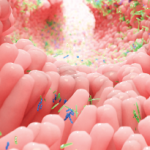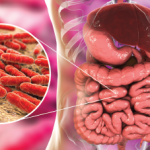BOSTON—In the early 1990s, immunologists thought there were just two types of helper T cells—Th1 and Th2—which, while not by themselves damaging, could activate other effector cells to promote disease. However, discoveries in last few years have proven that the T-cell world is actually much more diverse.
By 2000, researchers had discovered a third class of helper T cells that called into question everything known about Th1 and Th2. Surprisingly, these new cells—named Th17 because they secrete a cytokine called interleukin 17 (IL-17)—have some cytotoxic properties. Most interesting for rheumatologists, Th17 cells can display specificity for self-antigens, making them a crucial component of the development of inflammation and severe autoimmunity.
Research Background
The history, developmental properties, and potential therapeutic targets of Th17 cells were discussed by Daniel Cua, PhD, a researcher at Schering-Plough Biopharma/DNAX in Palo Alto, Calif., at the ACR/ARHP Annual Scientific Meeting in Boston last November. He also presented new data, published in the December issue of Nature Immunology (2007;8:1390-1397), showing how specific cellular environments can lead to the pathogenic properties of Th17 cells.
“There’s so much work on Th17 cells coming out now, and so fast,” Dr. Cua said. “It’s really changing the way immunologists think about inflammatory diseases.”
There’s so much work on Th17 cells coming out now, and so fast. It’s really changing the way immunologists think about inflammatory diseases.
—Daniel Cua, PhD
Practicing rheumatologists should pay attention to the new developments, he added, because the research will likely lead to effective therapies for autoimmune diseases. “There are no promises,” he cautioned, “but if you understand the disease process, then it makes sense that you can better treat it.”
Dr. Cua’s research track started seven years ago when one of his colleagues at DNAX, Robert A. Kastelein, PhD, discovered another cytokine, interleukin 23 (IL-23). In pivotal genetic experiments, they found that animals lacking IL-23 were completely resistant to collagen-induced arthritis. In other words, as the DNAX team published in Nature (2003;421:744-748), IL-23 was required for joint inflammation.
The next step was figuring out how IL-23 worked at the cellular level. Claire Langrish, PhD, then a post-doc in Dr. Cua’s lab, first investigated the nature of the cytokines the IL-23 cells were producing. “She uncovered that what was missing in the IL-23–resistant animal was in fact IL-17,” Dr. Cua explained. IL-23 is required for the production of the cytokine interleukin 17, and it’s IL-17 that’s driving the resistance to inflammation.

